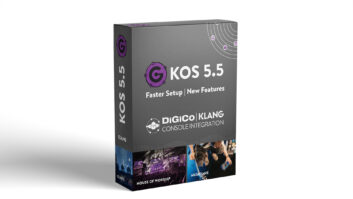WASHINGTON, D.C. — The capabilities of a wireless home-network technology developed by the HomeRF Working Group will get a significant boost now that the FCC has given the group the green light to increase the technology’s data rate by more than sixfold to 10 Mbps from 1.6 Mbps.
With an effective throughput, or payload, of 4-6 Mbps, the technology will quickly migrate from home PC networking applications to home A/V networking, the group predicted. Products incorporating the enhancement will be out as soon as first- or second-quarter 2001.
The current version of the 2.4GHz technology, called Shared Wireless Access Protocol (SWAP), supports wireless PC networking and cordless voice telephony at a data rate up to 1.6 Mbps, which delivers a throughput of only 500-600 Kbps. That’s enough for a SWAP-enabled PC to simultaneously surf the Internet through a broadband connection, print out files, and play back MP3 files residing on another PC’s hard drive, said Ben Manny, working group chairman and Intel’s director of residential communications.
The current bandwidth also supports up to three simultaneous streams of 128-Kbps MP3 audio.
The upgraded technology, to be incorporated in SWAP version 2.0, delivers data at speeds comparable to wireless corporate networks, the group said. That’s enough bandwidth to distribute multiple streams of uncompressed CD audio (requiring anywhere from 1.2-1.5 Mbps of throughput, various suppliers said), create high-quality wireless speaker systems, increase the number of simultaneous cordless-voice conversations to eight, significantly speed up Web surfing by multiple users sharing a broadband modem, and support wireless multiplayer videogaming. The potential also exists to wirelessly distribute one compressed video program with MPEG 1 (VHS-like) quality at 4 Mbps.
“We believe that these data rates will open up a new class of audio products, including wireless surround speakers, high-quality networked digital jukeboxes, and Internet radios,” said Bob Brummer, Dolby director of technology strategy.
Wireless distribution of Dolby Digital 5.1-channel audio from DVD-Video players, satellite receivers, cable boxes and digital TV broadcasts is also possible with less likelihood of interruption caused by limited bandwidth, he said.
Although the group said SWAP 2.0 won’t be ratified until the end of the year, 2.0 products could still become available in first-half 2001 as “silicon development has already been under way because of the confidence we had in the expected final ruling,” said Proxim’s Kevin Nagis.
The first SWAP products appeared in the spring from Compaq and Intel. Compaq offers a SWAP-enabled PC Card for laptops and a companion USB add-on for desktops. Intel’s AnyPoint introductions support home PC networking.
Some of the first 2.0 products will likely include an integrated data/voice gateway, which would incorporate a DSL or cable modem, let multiple computers access the Internet at high speed, and let multiple cordless phones, each with separate phone numbers, access the landline voice network.
The group also envisions wireless portable “Web pads” that access the Internet and display streaming video, plus cordless-phone handsets that control multiple home systems.
“The FCC decision provides us with the data rate we want while maintaining range, consumer price points and backward compatibility [with existing SWAP technology,” Manny said. Both versions support ranges up to 150 feet through walls.
The new capabilities are possible because the FCC approved the group’s proposal to let frequency-hopping spread-spectrum transmitters hop around in 5MHz-wide channels, up from 1MHz in the FCC’s previous rules. The current SWAP spec uses frequency-hopping spread-spectrum and 1MHz channels.
The group’s proposal drew opposition from some manufacturers and from WECA, the Wireless Ethernet Compatibility Alliance, whose members support a competing wireless-networking technology called direct-sequence spread-spectrum technology.
In its decision, the FCC stated, “We reject the arguments that such rule changes will have little or no benefit.” It also said that “analyses submitted by the opponents greatly overstate the risk of interference to other Part 15 devices.” Opponents’ analyses “are founded upon a large number of assumptions that lead to a great deal of uncertainty in the conclusions.”
WECA consists of about 50 manufacturers promoting the IEEE’s 802.11b HR standard, a direct-sequence spread-spectrum technology that operates at 11 Mbps in the 2.4GHz band.
The HomeRF Working Group consists of 90-plus members, including Compaq, IBM, Intel, Motorola and Siemens.













